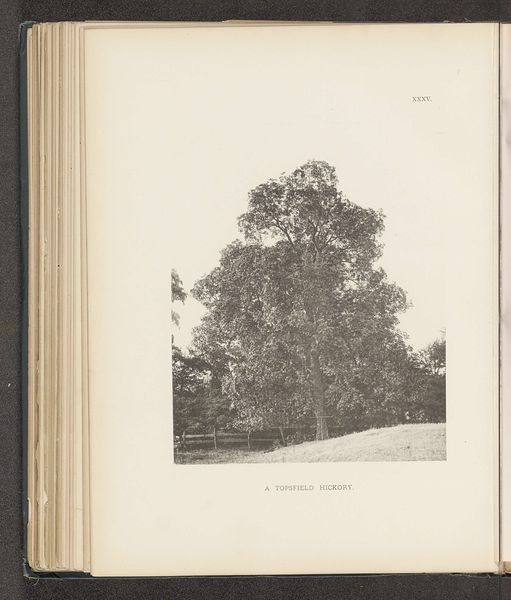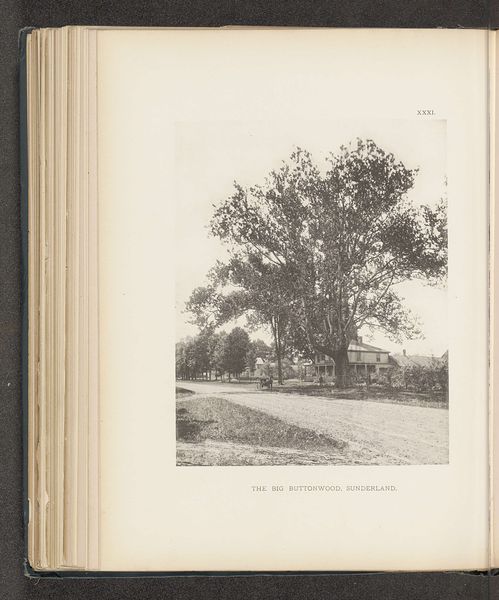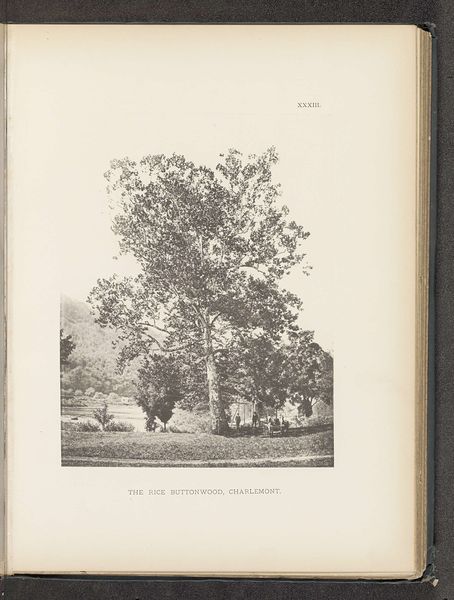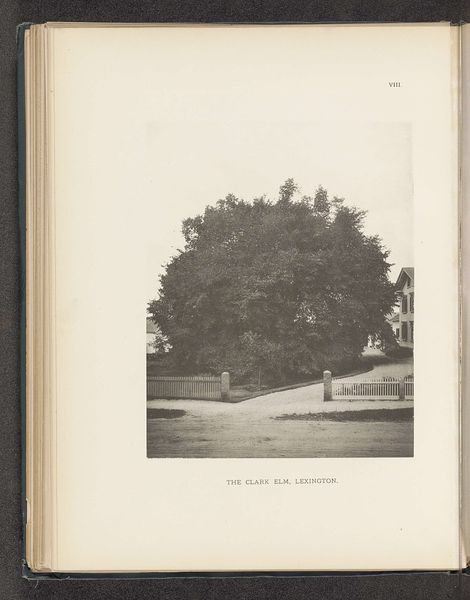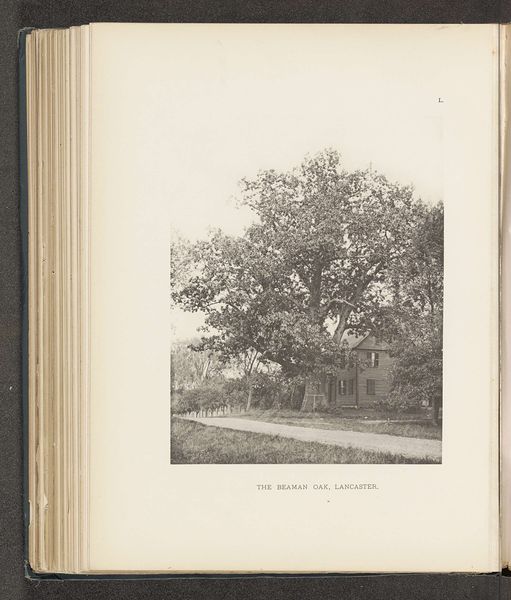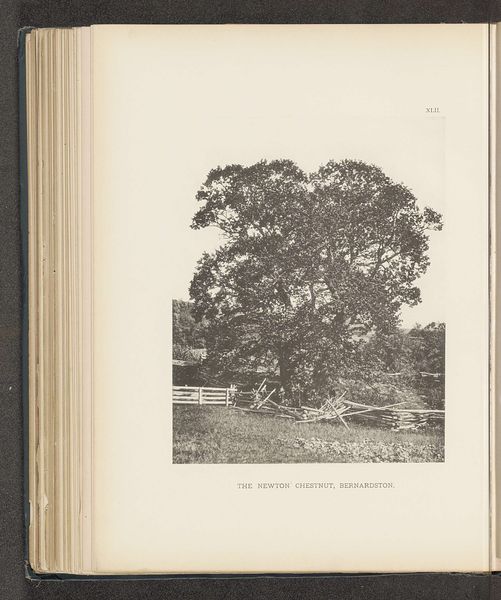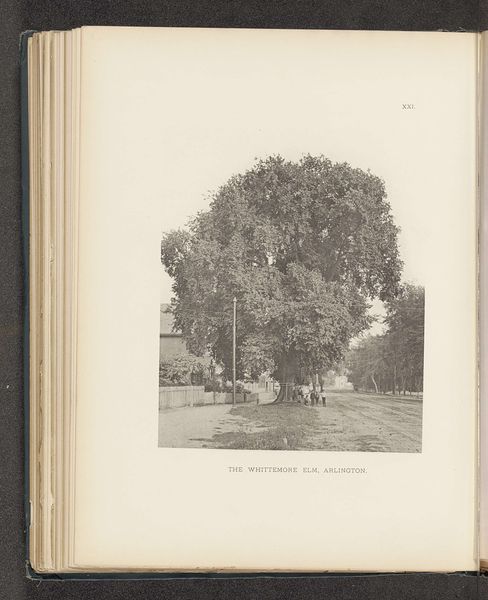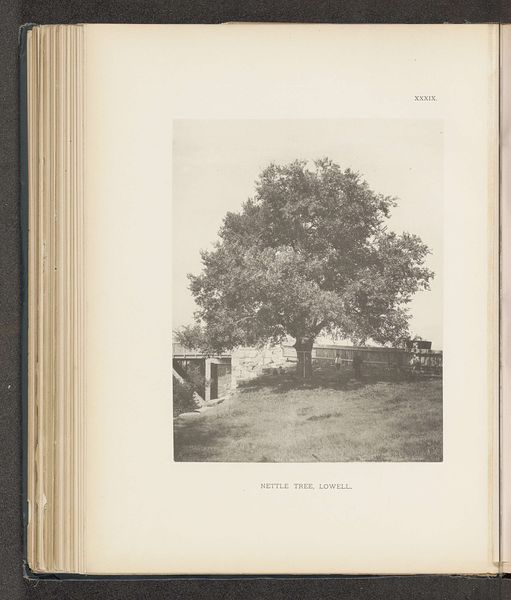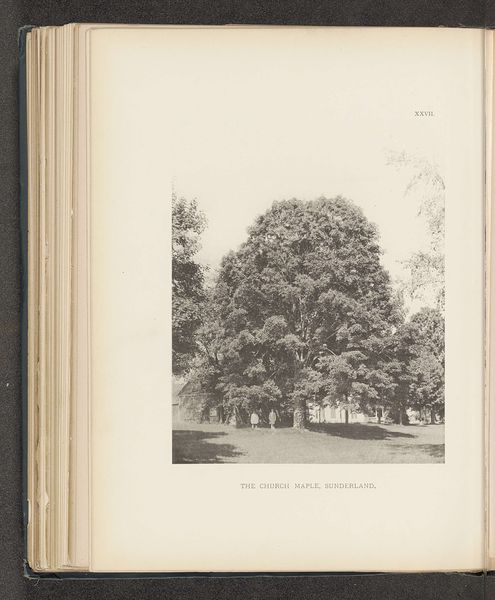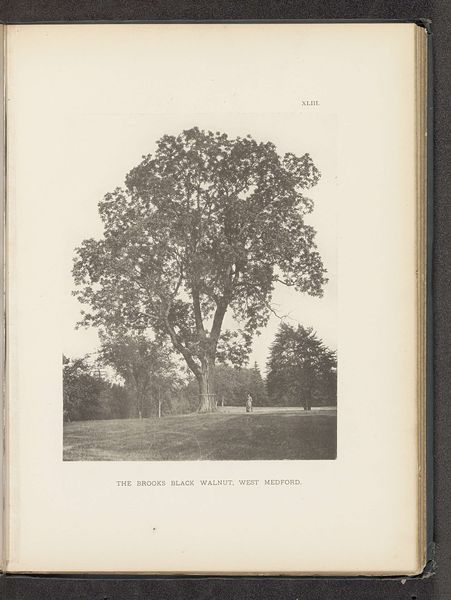
print, photography, gelatin-silver-print, albumen-print
#
pictorialism
# print
#
landscape
#
photography
#
gelatin-silver-print
#
albumen-print
#
realism
Dimensions: height 224 mm, width 174 mm
Copyright: Rijks Museum: Open Domain
Editor: This is "Society Oak, Charlemont," a photograph from before 1890, likely an albumen or gelatin silver print by Henry Brooks. It gives me a sense of stillness, almost reverence for nature. What do you see in it? Curator: I see more than just a still landscape; I see a document reflecting the intersection of westward expansion and the romanticization of nature that shaped American identity at the time. What does 'Society Oak' signify? Why that name for this particular tree in Charlemont? I would ask how this tree served the community. Editor: Perhaps it was a gathering place, or a landmark? I'm just speculating... Curator: Precisely. It's crucial to consider how naming conventions impose meaning, power dynamics, and narratives onto the land. We can ask how the presence of a solitary tree in a seemingly untouched landscape relates to the ideologies of manifest destiny. Does the photograph naturalize displacement? Is this a "celebration" or a depiction of nature as commodity? Editor: That's a perspective I hadn't considered. It complicates the reading of the image from one of peaceful appreciation to one of... historical awareness. Curator: Indeed. By acknowledging the historical and social contexts, we avoid perpetuating erasures. Looking closely allows us to address the politics inherent to how we depict "nature," prompting more critical dialogues about identity, power, and place. Editor: So, what started as a pretty picture actually opens up much bigger questions. It is food for thought on photography and society. Curator: Absolutely. Analyzing these intersections transforms our understanding and encourages engaged, critical dialogue with art history.
Comments
No comments
Be the first to comment and join the conversation on the ultimate creative platform.
